new posts in all blogs
Viewing: Blog Posts Tagged with: lines, Most Recent at Top [Help]
Results 1 - 11 of 11
How to use this Page
You are viewing the most recent posts tagged with the words: lines in the JacketFlap blog reader. What is a tag? Think of a tag as a keyword or category label. Tags can both help you find posts on JacketFlap.com as well as provide an easy way for you to "remember" and classify posts for later recall. Try adding a tag yourself by clicking "Add a tag" below a post's header. Scroll down through the list of Recent Posts in the left column and click on a post title that sounds interesting. You can view all posts from a specific blog by clicking the Blog name in the right column, or you can click a 'More Posts from this Blog' link in any individual post.

By: Koosje Koene,
on 5/25/2016
Blog:
Koosje Koene
(
Login to Add to MyJacketFlap)
JacketFlap tags:
mixed media,
watercolour,
pen,
colour,
coloured pencils,
Sharing Inspiration,
lines,
Sketchbook Skool,
draw tip,
drawing blog,
journal,
Add a tag
Beginning a new sketchbook can be quite exciting and a little bit scary. You don’t know what the paper will be like, how it will combine with your favourite art tools, whether or not you’re going to like it as much as the previous sketchbook you just filled and got kind of attached to… and above all a lot of people fear that first blank page. WHAT to do with it? It has to be meaningful, because it’s a new beginning, it should be a great drawing because it’s the first page of many to follow. Really?
I mean, really really?
No. It’s just the first page. Go for it, if the drawing isn’t as great as you hoped, there is a whole sketchbook left to make up for that flawed drawing. And does it HAVE to be meaningful? Says who?
I got this Stillman and Birn sketchbook on a trip to New York and dived right into it. I sat on the couch and my husband was playing the banjo so I thought I’d draw him. A nice way to practice gesture drawings, hands, faces. as soon as I put the first lines onto the paper I knew things were going to be out of proportion, but I went along with it anyway. To fix things a little, I kept adding things and used hatching lines, and added a bit of blue watercolor. Then I just flipped the page and went on with the next one, not really thinking about it that much and leaving the left page blank.
 Then, in Sketchbook Skool‘s kourse ‘Polishing’, we have an amazing Mixed Media artist: Juliana Coles. I am so happy for her to join the Fakulty! What she does is a different style of art journaling than we’ve covered so far in Sketchbook Skool. She layers her pages with drawings, paint, collage, lettering and anything she can find and feels the page needs. she uses writing to spill her thoughts or emotions onto the page and by adding layers of colours and lettering and photos and more paint, she builds very personal, emotional and just beautiful sketchbook pages. She keeps polishing the pages, getting back to them again and again, sometimes over the years. A page is never a finished piece – it can keep evolving and that is so interesting!
Then, in Sketchbook Skool‘s kourse ‘Polishing’, we have an amazing Mixed Media artist: Juliana Coles. I am so happy for her to join the Fakulty! What she does is a different style of art journaling than we’ve covered so far in Sketchbook Skool. She layers her pages with drawings, paint, collage, lettering and anything she can find and feels the page needs. she uses writing to spill her thoughts or emotions onto the page and by adding layers of colours and lettering and photos and more paint, she builds very personal, emotional and just beautiful sketchbook pages. She keeps polishing the pages, getting back to them again and again, sometimes over the years. A page is never a finished piece – it can keep evolving and that is so interesting!
It is so different from what I do, and I need to take a big step out of my comfort zone to actually do this mixed media stuff. But outside of the comfort zone IS where the magic happens so I love that challenge! And this is one of the beautiful things about Sketchbook Skool. One week you may be completely inside my comfort zone drawing a meal following Matthew Midgley‘s lead, and a week later you’re exploring and discovering a whole new approach to making art!
So Juliana gives the Sketchbook Skool Students a piece of homework to do the same. She suggests you can look for a page in your sketchbook that you don’t like so much (or that you DO like), and start spicing it up.
So I took out lots of art tools, even ones that I hadn’t used for quite a while and dusted those off, took that page above, and this is what I made:

I also made a video to share my process with the Sketchbook Skool Students, and this is it:
The post How To Fix Flaws appeared first on Make Awesome Art.
The first day of SDCC hasn’t even begun yet and there’s already a line for Friday’s Hall H panels. According to SDCC’s policies, wristbands for these panels won’t be distributed until this evening, which means these poor souls will be spending their entire first day of the show waiting for tomorrow, as is the comic con way.
Friday’s Hall H events include two The Walking Dead panels, a Game of Thrones Q&A, and a Star Wars: The Force Awakens preview, so it’s no wonder everything is already terrible.
Stay tuned to The Beat for SDCC coverage all weekend. We’ll let you know when the line reaches Manhattan.

Even though I'm not much of a drinker, I like spending time in cafes, with my sketchbook of course.
I started the journal spread below while I waited to meet a friend in a cafe downtown in Amsterdam. Then, when she arrived, we had a lot to catch up on, so I put the sketchbook aside to chat with her, and also to make a quick blind contour drawing of her.
Then after dinner, another friend joined us, and while we chatted, I opened my sketchbook again to crosshatch my way through the spread. At first I thought they might think of it as anti-social of me, but when I asked them, they told me to go on and that they were fascinated to see the drawing come to life. I am happy to notice that by now I can do some drawing and talking at the same time, although it's still not 'fluently', but I'm learning!
Sometimes, at the end of the day when it's already dark, I get frustrated that I still didn't get my daily drawing done. So then I just sit down, put something in front of me, place a lamp beside/above it and draw. I made this drawing of a pair of shoes, while sitting on the couch, sipping a cup of herbal tea and watching a movie on tv with one eye. It was wonderful to be absorbed in the hatching. Done with a fountain pen (Lamy safary) filled with carbon ink:

More Hatching! I took out a good old black Bic ballpoint pen, and started drawing the condiments on the table of a Sechuan restaurant in the centre of Amsterdam, while waiting for my dinner companion, who called to say that he was running a little later. That gave me 15 minutes of drawing time. So I got the basics in, took a picture with my phone for reference, and later that night when I got back home, I sat up in bed and did the rest of the hatching. It was late, I was tired, and it was so relaxing, at some point I felt myself actually dozing off while hatching!!
The next day, I looked at it again and saw it needed a little bit of background or colour so I added the yellow watercolour:

There is ALWAYS something interesting to draw. And if you really want to - you can find and make time for it. Even a quick 5-minute scribble can be very rewarding.
If you need a little help,
making time to do what you love, and to fill your art journal pages every day, you can still
join my 4-week online workshop 'Awesome Art Journaling' for only $69. I will guide you through those weeks and give you a kickstart on a daily drawing habit.
Join me by clicking here.

By: Koosje Koene,
on 9/12/2013
Blog:
Koosje Koene
(
Login to Add to MyJacketFlap)
JacketFlap tags:
journal,
pen,
lines,
Add a tag
Not so long ago, I thought I wasn't any good at drawing buildings. I liked drawing objects, in which I could draw all kinds of details. I liked drawing people. But somehow, I avoided the surroundings - buildings, street views. I sort of wasn't interested, and told myself it wasn't 'my kind of thing'.
I remember telling my friend
Yvonne this on one of our very first sketch dates. She draws buildings in such a confident way. With big eyes I watched her drawing the lines into her sketchbook with black pen and I gasped: 'you don't even
sketch your lines in first with pencil?' She said: 'No, even if a line isn't quite accurate, that's just how the drawing is going to be'.
Wow.
That day, I carefully drew the detail of a building, using her brush pen (which also was new for me). After drawing the lines with pencil first that is...
I said to Yvonne: 'I'm just not good at drawing buildings'. Her reply was: 'Of course you are!'
She was so right. In the back of my mind I knew that I could do it. In the
online drawing course and
workshop I teach, I always tell people: '
you can learn to draw anything, as long as you practise a lot'. Because I know it's true. I experienced it and I am still learning.
It took me months before I started getting more comfortable drawing buildings. I got very interested in urban sketching and I've always
loved drawing outside. So I practised. I found out drawing buildings is not much different than drawing anything else. It's all about looking at negative spaces, keeping the right proportions and angles. The great thing is - you can take as much time as you need,they don't move like people do. The only thing that changes is the light. I still sometimes sketch the basic lines and proportions in with a pencil, to erase those later, but I actually like diving in with pen directly now. The thing I dreaded most at first.
Learning and developing skills is so much fun!

I did this drawing after dropping off a batch of greeting cards and stationary in a wonderful shop in Dordrecht, the Netherlands. They are a 'creative warehouse' and my stuff is for sale there now. It's a 1 1/2 hour drive from Amsterdam, so before heading back, I treated myself to a cup of coffee and a drawing.
It was such a sunny day, and I hadn't been outside yet. Working on workshop material and a commision. Didn't have much time, but needed a break so I walked to the square around the corner, sat down on a bench and sketched the view. Then after 20 minutes or so, my alarm went off and I needed to pack it up and go to the meeting I had planned next. I felt refreshed and warmed by the sun, and my mind was emptied and reset after concentrating on the electric lines (for the trams), drawing in just enough detail to indicate tree leaves and buildings. Nice.
By:
KidLitReviews,
on 9/23/2012
Blog:
Kid Lit Reviews
(
Login to Add to MyJacketFlap)
JacketFlap tags:
Children's Books,
NonFiction,
Middle Grade,
ABC,
5stars,
Library Donated Books,
children's book,
monkey,
boats,
radar,
family fun,
tack,
ocean liners,
instruments,
horns,
middle grade book,
compass,
dinghy,
galley,
oars,
lines,
sailboats,
jib,
anchor,
port,
boating terms,
ensign flag,
fender,
keel,
learning about boats,
mizzen,
motoar boats,
quarterberth,
ship's bell,
sou'wester,
starboard,
tow boat,
transom,
yawl,
zigzags,
alphabet,
Add a tag
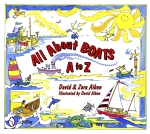 5 stars
All About Boats: A to Z
David & Zora Aiken
Schiffer Publishing
No. Pages: 32 Ages: 6 to 8
....................
5 stars
All About Boats: A to Z
David & Zora Aiken
Schiffer Publishing
No. Pages: 32 Ages: 6 to 8
....................
Back Cover: Boating time is family time as everyone often shares both the fun and the work. Even young children are eager to help. Their curiosity is roused and they’ll look for ways to learn more about boating. All About Books: A to Z shows the youngest crew members the purpose of the many things they see while boating. The book can prompt conversations about all aspects of boating as families develop their onboard teamwork.
All About Boats: A to Z is a unique alphabet book. For one, it is written for older children who already know their ABCs. A boating term, beginning with that page’s letter, helps a child learn about boats and boating terms. A rhyming verse explains the term in a light, easy tone. Finally, the illustrations add further explanation of the term.
For example, the letter K’s word is keel.
Most boats have a keel—
It’s part of the design.
A sailboat’s deep keel
Helps hold a straight line.
The illustration for letter K is a sailboat on transparent water, allowing the child to see the keel on the sailboat. This is a great way for anyone to learn something new. The more senses involved, the better the retention.
All About Boats: A to Z uses sight and sound, but in multiple ways. The child will read the letter and its word in bold type. Then they will read a short verse, which rhymes and includes the word’s purpose. Each illustration shows the child where the term is in relation to boating. Assuming the family owns a boat, the child can connect then term with the real thing.
I like the book’s multiple avenues for learning both the alphabet and boating terms. Younger children can use this as an ABC book, especially if interested in boats. All About Boats: A to Z is written for the older child who wants or needs to learn the terms of boating. Each verse helps the child remember the purpose of each word. The important word is in bold type and always in the verse. The illustrations do a wonderful job of capturing the word, while still keeping the book’s feel light and airy, somewhat like boating itself.
I think kids will love to learn about boats by using this book. It is friendly, fun, and familiarizes the child to boats and their functions quickly. A young child, under the age of five or six may not understand all of the terms, even after having the verses read to them and looking at the illustrations. Still, I would not hesitate in giving this ABC book to a youngun (as my fellow book reviewer Erik, called young children in a recent review).
This is a book that can help a child prepare for a boating trip and then reinforce the boating term, part, and function while on the trip. Some adults, not accustom to boating on a regular basis, will learn much from this cute book. T is for transom,* which is the area on the back of the boat, where a boat’s given name is painted. I did not know that.
I like this book. Kids will enjoy the illustrations and learning about boats. I think girls will enjoy this as much as boys. Anyone with children, or grandchildren, who regularly boats, especially if they own a boat, will find this book valuable. Any child who loves boats, be it the large ones sailing the ocean or the small ones sailing the carpet, will want this boat, learn from this boat, and be thrilled to own this book. All About Boats: A to Z is a great book for many reasons—all of them kid friendly.
∞∞∞∞∞∞∞∞♦♦♦♦∞∞∞∞∞∞∞∞
*One possible game that can be played to reinforce remembering a term, is to find that term on other pages of the book. For example, the term transom, which I did not know until reading this book. There are seven transoms with a name in this book. One boat has its name on its side, so I would think it does not count.
Those seven boats with names, when found by the child, will help reinforce what a transom is for. The last spread is a beautiful scene of all shapes and sizes of boats, yet not one has a name on its transom. This is a missed opportunity for reinforcement of letter T’ and the word transom.
Author: David & Zora Aiken
Illustrator: David Aiken
Publisher: Schiffer Publishing website
Release Date: July 28, 2012
ISBN: 978-0-7643-4184-7
Number of Pages: 32
Ages: 5 to 8
.......................

Filed under:
5stars,
Children's Books,
Library Donated Books,
Middle Grade,
NonFiction Tagged:
ABC,
alphabet,
anchor,
boating terms,
boats,
children's book,
compass,
dinghy,
ensign flag,
family fun,
fender,
galley,
horns,
instruments,
jib,
keel,
learning about boats,
lines,
middle grade book,
mizzen,
monkey,
motoar boats,
oars,
ocean liners,
port,
quarterberth,
radar,
sailboats,
ship's bell,
sou'wester,
starboard,
tack,
tow boat,
transom,
yawl,
zigzags 






Follow the glittery line that runs through this picture book and turns itself into all kinds of things: the waves above an octopus, the veins in a leaf, the wrappings curling around a mummy, and the trapping threads of a spiderweb...
Also try:Squiggle
The dot
Follow the Line
Sparkle and Spin
Color of his own
Not a box
Alpha beasties
Little green



By:
Darcy Pattison,
on 3/6/2012
Blog:
Darcy Pattison's Revision Notes
(
Login to Add to MyJacketFlap)
JacketFlap tags:
story,
novel,
scenes,
chapter,
novel revision,
opening,
start,
lines,
begin,
Add a tag
 Then, in Sketchbook Skool‘s kourse ‘Polishing’, we have an amazing Mixed Media artist: Juliana Coles. I am so happy for her to join the Fakulty! What she does is a different style of art journaling than we’ve covered so far in Sketchbook Skool. She layers her pages with drawings, paint, collage, lettering and anything she can find and feels the page needs. she uses writing to spill her thoughts or emotions onto the page and by adding layers of colours and lettering and photos and more paint, she builds very personal, emotional and just beautiful sketchbook pages. She keeps polishing the pages, getting back to them again and again, sometimes over the years. A page is never a finished piece – it can keep evolving and that is so interesting!
Then, in Sketchbook Skool‘s kourse ‘Polishing’, we have an amazing Mixed Media artist: Juliana Coles. I am so happy for her to join the Fakulty! What she does is a different style of art journaling than we’ve covered so far in Sketchbook Skool. She layers her pages with drawings, paint, collage, lettering and anything she can find and feels the page needs. she uses writing to spill her thoughts or emotions onto the page and by adding layers of colours and lettering and photos and more paint, she builds very personal, emotional and just beautiful sketchbook pages. She keeps polishing the pages, getting back to them again and again, sometimes over the years. A page is never a finished piece – it can keep evolving and that is so interesting!















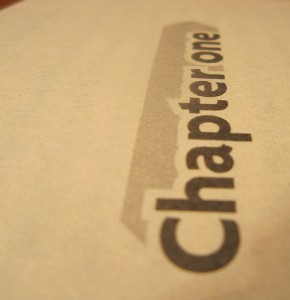


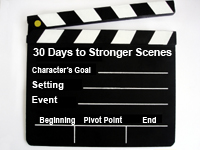



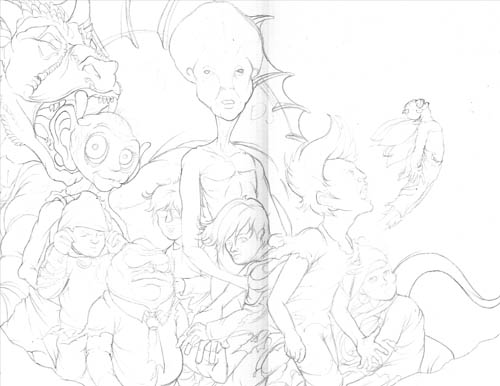
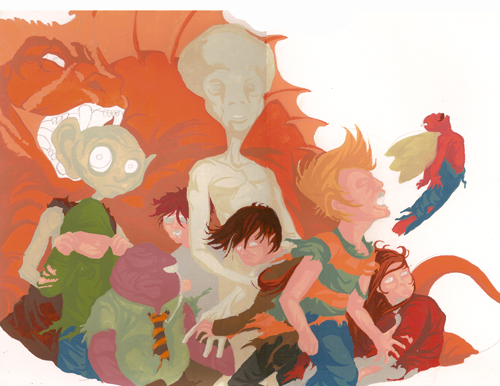
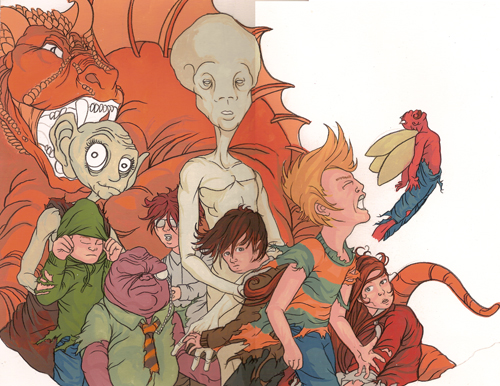
Any reason you can’t order the wristbands when you order your tickets?
Actually a serious response even if it sounds like sarcasm. Could it be because doing it that way would take away from SDCC being able to generate media attention for how long the lines for Hall H panels are each year?
Well that’s evil.
You’ve got to figure that every person standing on that line is a person not spending money in the convention or the city in general.
How ridiculous.